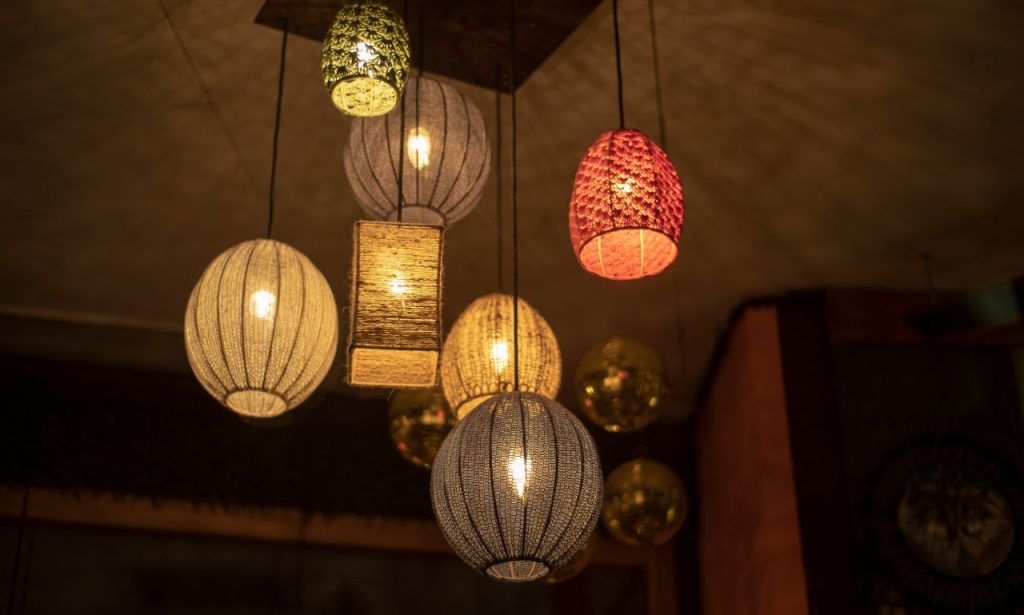Mixing and matching lamps in a room isn’t just about throwing together different styles; it’s about creating a harmonious environment that reflects your personality and meets your needs. This guide will provide you with advanced insights and practical tips that go beyond the standard advice, ensuring you can create a captivating and well-lit space.
Why Mix and Match Lamps in a Room
Creating Visual Interest
One of the primary benefits of mixing and matching lamps is the creation of visual interest. When you combine different lamp styles, shapes, and sizes, you introduce layers of light and shadow, adding depth and dimension to your space. This technique breaks the monotony, making your room more dynamic and engaging.
Example: Imagine a room with a sleek, modern floor lamp paired with a vintage table lamp. The juxtaposition of styles can create a focal point that draws the eye and sparks conversation.
Expressing Personal Style

Your choice of lamps can say a lot about your personal style. Mixing and matching allows you to showcase your unique taste and preferences. Whether you lean towards bohemian, minimalist, industrial, or eclectic styles, your lamps can reflect your personality in a way that standardized lighting cannot.
Example: A bohemian-inspired room might feature a mix of colorful, patterned lampshades and earthy, handcrafted bases, whereas a minimalist space might combine sleek, geometric shapes in neutral tones.
Blending Different Design Elements
Mixing and matching lamps can help you blend various design elements in your room. By thoughtfully combining different lamp styles, you can create a cohesive look that ties together disparate furniture pieces, color schemes, and textures.
Example: A rustic wooden lamp might harmonize with a modern metal floor lamp if they share a common color palette or design motif, such as exposed bulbs or industrial finishes.
Encouraging Creativity
The process of selecting and arranging lamps encourages creativity. It invites you to think outside the box and experiment with combinations you might not have considered before. This creative exploration can lead to unexpected and delightful results, making your room uniquely yours.
Example: Mixing a whimsical, nature-inspired table lamp with a sleek, contemporary pendant light can create an intriguing blend that adds character to your space.
Considerations When Choosing Lamps
Selecting the right lamps for your room involves more than just aesthetic preferences. Here are some key considerations to keep in mind:
Pay Attention to Scale
Scale is crucial when mixing and matching lamps. Lamps that are too large or too small for the space can disrupt the visual balance of the room. Consider the size of your furniture and the overall dimensions of the room when choosing lamps.
Example: In a spacious living room, a large floor lamp can create a dramatic statement, while in a smaller bedroom, a pair of petite bedside lamps might be more appropriate.
Mix and Match Textures
Texture is an often-overlooked element that can add richness and depth to your lighting design. Combining different textures, such as smooth metals, rough woods, or soft fabrics, can enhance the tactile experience of your space.
Example: Pairing a glossy ceramic table lamp with a burlap lampshade can create an interesting contrast that adds visual and tactile appeal.
Consider the Function of Each Lamp
Functionality is just as important as aesthetics when choosing lamps. Think about the purpose of each lamp and how it will be used in the room. Task lighting, ambient lighting, and accent lighting all serve different functions and can be combined to create a well-lit space.
Example: A reading nook might benefit from a bright, focused task lamp, while a living room can be enhanced with a combination of ambient floor lamps and accent table lamps.
Experiment with Different Shapes and Silhouettes

Playing with different shapes and silhouettes can add a unique flair to your room. Don’t be afraid to mix round, square, and abstract shapes to create an engaging and dynamic lighting arrangement.
Example: A tall, slender floor lamp can complement a wide, bowl-shaped table lamp, creating a balanced yet intriguing visual contrast.
Conclusion
Mixing and matching lamps in a room is an art that goes beyond mere functionality. It is an opportunity to infuse your personal style into your space, create visual interest, and blend different design elements harmoniously. By paying attention to scale, texture, function, and shape, you can achieve a well-lit, aesthetically pleasing environment that reflects your unique taste and creativity.
ALSO READ: How to Coordinate Lighting Fixtures in Your Home
FAQs
The right lampshade should complement the lamp base and the room’s decor. Consider the shape, size, color, and material of the lampshade to ensure it harmonizes with the overall design.
Absolutely! Mixing different lamp styles can add character and depth to your room. Just ensure there is a common element, such as color or material, to maintain cohesion.
Start by identifying the lighting needs of each area. Use a combination of ambient, task, and accent lighting to create a balanced and functional arrangement.
Vintage lamps can add a unique touch to a modern space. Look for pieces that share a common color palette or design motif with your modern decor to create a cohesive look.





